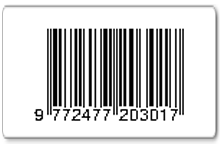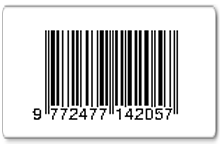Examining High School Students’ Cognitive Structures on the Concept of Cleaning Agent through Word Association Test
Abstract
The aim of this research is to determine high school students’ cognitive structure regarding cleaning agent via word association test. The sample of the research consists of 160 high school students. A word association test (WAT) prepared to test the structure addressed in the study was used as the data collection tool. Content analysis was used to evaluate the data obtained from the sample group. Words written by high school students in relation to the test were analyzed elaborately and based on this analysis concepts were categorized as well as their frequency. As for the first section of the word association test, three main categories were obtained: Chemical cleaning agent, natural cleaning agent, and cleaning equipment. When it comes to the second part, the highest frequency values were in the category of chemical cleaning agent, natural cleaning agent category, cleaning equipment category. All in all, it was concluded that the natural cleaning agent category had the highest frequency, the chemical cleaning agent category was in the second place, and the cleaning equipment category had the lowest frequency.
Keywords
Full Text:
PDFReferences
Akdiş, C 2019, Detergents we use for cleaning and their negative effects on our health, Turkish National Allergy and Clinical Immunology Association. March 2020, https://www.aid.org.tr/temizlik-amaciyla-kullandigimiz-deterjanlar-ve-sagligimiz-uzerine-olumsuz-etkileri/.
Alfonso, JH Thyssen, JP Tynes, T Sivesind, IM & Johanssen HA 2015, ‘Self-reported occupational exposure to chemical and physical factors and risk of skin problems: a 3-year follow-up study of the general working population of Norway’, Acta Derm. Venereol, vol. 95, pp. 959-62. doi: 10.2340/00015555-2135
Anılan, B 2017, ‘Preservice science teachers metaphoric perceptions about chemistry concept’. Journal of Qualitative Research in Education’, vol. 5, no. 2, pp. 7-28. doi: 10.14689/issn.2148-2624.1.5c2s1m
Antonsson, AB 1995, ‘Substitution of dangerous chemicals-the solution to problems with chemical health hazards in the work environment?’, American Industrial Hygiene Association Journal, vol. 56, no. 4, pp. 394-7, doi: 10.1080/15428119591017024
Atasoy, B 2004, Science Learning and Teaching. Asil Publishing, Ankara.
Aulanko M 2007, ‘Attitudes of young adults towards cleaning agents’, Nurture, vol. 1, no.1, pp. 30-36.
Avila-Sierra, A Vicaria, JM Lechuga, M Martínez-Gallegos, JF Olivares-Arias, V Medina-Rodríguez, AC Jiménez-Robles, R & Jurado-Alameda, E 2021, ‘Insights into the optimization of the clean-in-place technique: Cleaning, disinfection, and reduced environmental impact using ozone-based formulations’, Food and Bioproducts Processing, vol.129, pp.124-33, doi:10.1016/j.fbp.2021.08.003.
Ayas, A, Çepni, S, Johnson, D, & Turgut, MF 1997, Chemistry Teaching. YÖK/World Bank, National Education Development Project Pre-Service Teacher Training, Ankara.
Ayaz, A & Yurttagül, M 2008, Toxic elements in food II, February 2020 https://sbu.saglik.gov.tr/Ekutuphane/kitaplar/t70.pdf.
Azzahra, SF & Simatupang, NI 2021, ‘Implementation of talking stick method on acid-base concepts to ımprove students’ critical thinking skills’, International Journal of STEM Education for Sustainability, vol. 1, no. 1, pp. 53-9 Doi:10.53889/ijses.v1i1.8
Bahar, M Nartgun, Z Durmus, & Bicak, 2006, Traditional and alternative assessment and evaluation of teachers’ manual. Ankara: Pegem A Publishing.
Bahar, M & Kiras, B 2017, ‘General analysis of articles and thesis on environmental education which were published in Turkey’, Abant İzzet Baysal University Journal of Faculty of Education, vol. 17, no. 4, pp. 1702-20. doi.org/10.17240/aibuefd.2017.17.32772-363962
Cardellini, L & Bahar, M 2000, ‘Monitoring the learning of chemistry through word association tests’, Australian Chemistry Resource Book, vol. 19, pp. 59-69.
Coştu, B Ünal, S & Ayas, A 2007, ‘The use of daily-life events in science teaching’, Ahi Evran University Journal of Kırşehir Education Faculty, vol. 8, no. 1, pp. 197-207.
Creswell, JW 2018, Qualitative Research Methods. Siyasal Publishing, Ankara.
Creswell, JW 2020, Qualitative Inquiry and Research Design: Choosing Among Five Approaches. Siyasal Publishing, Ankara.
DeKorver, BK & Towns, MH 2015, ‘General chemistry students’ goals for chemistry laboratory coursework’, Journal of Chemical Education, vol. 92, no. 12, pp. 2031-37. doi:10.1021/acs.jchemed.5b00463
Derman, A 2014, ‘High school students’ metaphoric perceptions for the concept of chemistry’, Turkish Studies–International Periodical for the Languages, Literature and History of Turkish or Turkic, vol. 9, no. 5, pp. 749-76. doi:10.21733/ibad.423560
Derman, A & Eilks, I 2016, ‘Using a word association test for the assessment of high school students’ cognitive structures on dissolution’, Chemistry Education Research and Practice, vol. 17, pp. 902-13. doi:10.1039/C6RP00084C
Dönmez Usta, N & Ültay, N 2015, ‘A comparative study of preschool student teachers' “Chemistry” metaphors’, The Black Sea Journal of Social Sciences, vol. 7, no. 2, pp. 163-77.
Elmas, R 2012, ‘The effect of context based instruction on 9th grade students understanding of cleaning materials topic and their attitude toward environment’, MPA Thesis, Middle East Technical University, Ankara.
Elmas, R & Geban, Ö 2016, ‘The effect of context based chemistry instruction on 9th grade students' understanding of cleaning agents topic and their attitude toward environment’. Education and Science, vol. 41, no. 185, pp. 33-50. doi: 10.15390/EB.2016.5502.
Erol, GH & Gezer, K 2006, ‘Prospective of elementary school teachers’ attitudes toward environment and environmental problems’, International Journal of Environmental and Science Education, vol. 1, no. 1, pp. 65-77.
Gegios, T Salta, K & Koinis, S 2017, ‘Investigating high-school chemical kinetics: the Greek chemistry textbook and students' difficulties’, Chemistry Education Research and Practice, vol. 18, pp.151-68. doi:10.1039/C6RP00192K
Giammatteo, MT L Valdivia, AEO, 2021, ‘Introducing chemistry of cleaning through context-based learning in a high-school chemistry course’, American Journal of Educational Research, vol. 9, no. 6, pp. 335-40. doi: 10.12691/education-9-6-2.
Gilbert, JK Boulter, C & Rutherford, M 1998, ‘Models in explanations, part 2: Whose voice? Whose ears?’, International Journal of Science Education, vol. 20, pp. 187-203.
doi:10.1080/0950069980200205
Guerrero, GE Jaramillo, CA & Meneses, CA 2016, ‘Mmacutp: Mobile application for teaching analytical chemistry for students on qualitative analysis’, Proceedings of the International Conference on Interactive Mobile Communication, Technologies and Learning (pp. 50–54). Piscataway, NJ: IEEE.
Hauthal, HG & Wagner, G 2004, Household cleaning, care and maintenance products. Chemistry, application, ecology and consumer safety. Augsburg: Verlag für Chemische Industrie. H Ziolkowsky GmbH.
Hellweg, S Demou, E Scheringer, M McKone, TE & Hungerbühler K 2005, ‘Confronting workplace exposure to chemicals with LCA: Examples of trichloroethylene and perchloroethylene in metal degreasing and dry cleaning’, Environmental Science & Technology, vol. 39, no.19, pp. 7741-48. doi: 10.1021/es047944z
Jaworska, J Genderen-Takken, HV Hanstveit, A Plassche, E Feijtel, T, 2002, ‘Environmental risk assessment of phosphonates, used in domestic laundry and cleaning agents in the Netherlands’, Chemosphere, vol. 47, no. 6, pp.655-65, doi: 10.1016/S0045-6535(01)00328-9.
Jyotie, S 2015, ‘Health issues and environmental impact of cleaning agents’, International Journal of Novel Research in Life Sciences, Vol. 2, no 2, pp. 31-8.
Karapınar, N 2015, ‘The danger in cleaning materials, are we threatening the environment and our health in order to be cleaner?’, MTA Natural Resources and Economy Bulletin, vol. 19, pp. 107-18.
Kaya, MF & Taşdere, A 2016, ‘An alternative measurement and assessment method for elementary Turkish education: Word Association Test (WAT)’. Electronic Turkish Studies, vol. 11, no. 9, pp.803-20.
Kostova, Z & Radoynovska, B 2010, ‘Motivating students’ learning using word association test & concept maps’, Bulgarian Journal of Science and Education Policy, vol. 4, no. 1, pp. 62–98.
Kurt, H 2013, ‘Biology student teachers’ cognitive structure about “Living Thing”’, Educational Research and Reviews, vol. 8, no. 12, pp. 871-80. doi:10.5897/ERR2013.1408
Le Moual, N Varraso, R Siroux, V Dumas, O Nadif, R Pin, I Zock, JP & Kauffmann, F 2012, ‘Domestic use of cleaning sprays and asthma activity in females’, European Respiratory Journal, vol. 40, pp. 1381-89. doi: 10.1183/09031936.00197611
Liu, X & Ebenezer, J 2002, ‘Descriptive categories and structural characteristics of students’ conceptions: an exploration of the relationship’, Research in Science and Technological Education, vol. 20, pp.111-32. doi:10.1080/02635140220130966
MONE, 2018, Secondary school chemistry lesson curriculum. Ankara, Turkey: MONE Publishing.
Mujtaba, T Sheldrake, R & Reiss, MJ 2020, Chemistry for All. Reducing inequalities in chemistry aspirations and attitudes. England: Royal Society of Chemistry.
Nakiboğlu, C 2016, ‘Probing high school students' cognitive structure about physical and chemical changes through word association test’, ICEMST 2016 International Conference on Education in Mathematics, Science & Technology, Bodrum, pp. 547-50
Özkurt-Sivrikaya, S 2019, ‘Chemistry with metaphors: Case of Kocaeli (Turkey) vocational school’. European Journal of Education Studies, vol. 6, no. 5, pp. 367-79. doi: 10.5281/zenodo.3406786
Patton, MQ 2018, Qualitative Research & Evaluation Methods, Publishing, Ankara.
Rennie, LJ & Jarvis, T 1995, ‘Children’s choice of drawings to communicate their ideas about technology’, Research in Science Education, vol. 25, pp. 239-52. doi: 10.1007/BF02357399
Rüschenpöhler, L & Markic, S 2020, ‘Secondary school students’ acquisition of science capital in the field of chemistry’, Chemistry Education Research and Practice, vol. 21, no. 1, pp. 220-36. doi:10.1039/C9RP00127A
Shavelson, RJ 1974, ‘Methods for examining representations of a subject-matter structure in a student's memory’, Journal of Research in Science Teaching, vol. 11, no. 3, pp. 231-49. doi: 10.1002/tea.3660110307
Sterling, S 2009, Ecological intelligence: Viewing the world relationally. In A. Stibbe (Ed.), The handbook of sustainability literacy: Skills for a changing world (pp. 76-83). Totnes, UK: Green Books
Şahin, NF Cerrah, L Saka, A & Şahin, B 2004, ‘A practice for student centered ecology course in higher education’, Gazi University Journal of Gazi Education Faculty, vol. 24, no. 3, pp.113-28.
Taufik, AN Berlian, L Suryani, DI Nulhakim, L Rohmah, RB & Ansori, M 2021, ‘Validity of a kahoot!-based cognitive test instrument on corona pandemic theme’, Jurnal Penelitian dan Pembelajaran, vol. 7, no. 1, pp. 118-33. doi: 10.30870/jppi.v7i1.9598
Tsai, CC & Huang, CM 2002, ‘Exploring students' cognitive structures in learning science: A review of relevant methods’, Journal of Biological Education, vol. 36, no. 4, pp. 163-9. doi:10.1080/00219266.2002.9655827
URL-1. Chemical Cleaning Materials and Their Correct Use, viewed 10 May 2020, http://gebze.meb.gov.tr/meb_iys_dosyalar/2017_09/26095332_Gebze_ktms_ve_dogru_kullanimi.pdf
URL-2. Chemical Dangers, viewed 3 March 2020, < https://cdn.istanbul.edu.tr/statics/isguvenligi.istanbul.edu.tr/wp-content/uploads/2014/08/Kimyasal-etkenler.pdf>
Weinmann, T Gerlich, J Heinrich, S Nowak, D Mutius, E Vogelberg, C Genuneit, J Lanzinger, S Al-Khadra, S Lohse, T Motoc, I Walter, V &Radon K, 2017, ‘Association of household cleaning agents and disinfectants with asthma in young German adults’, Occupational & Environmental Medicine, vol. 74, pp. 684–90. doi:10.1136/ oemed-2016-104086).
Wilson, DI 2005, ‘Challenges in cleaning: Recent developments and future prospects’, Heat Transfer Engineering, vol. 26, no. 1, pp. 51-9, doi: 10.1080/01457630590890175
Yıldırım, A & Şimsek, H 2006, Qualitative Research Methods in the Social Sciences. Seçkin Publishing, Ankara.
Yiğit, EA 2016, ‘Investigating cognitive structures in some basic chemistry concepts via word association test’, Elementary Education Online, vol. 15, no. 4, pp. 1385-98. doi:10.17051/io.2016.12031
Yildirir, HE & Demirkol, H 2018, ‘Identifying mental models of students for physical and chemical change’,Akdiş, C 2019, Detergents we use for cleaning and their negative effects on our health, Turkish National Allergy and Clinical Immunology Association. March 2020, https://www.aid.org.tr/temizlik-amaciyla-kullandigimiz-deterjanlar-ve-sagligimiz-uzerine-olumsuz-etkileri/.
Zota, AR Aschengrau, A Rudel, RA & Brody, JG 2010, ‘Self-reported chemicals exposure, beliefs about disease causation, and risk of breast cancer in the Cape Cod breast cancer and environment study: A case-control study’, Environmental Health, vol. 9, no. 40, pp.1-16. doi:10.1186/1476-069X-9-40
DOI: http://dx.doi.org/10.30870/jppi.v7i2.12058
Refbacks
- There are currently no refbacks.
Copyright (c) 2021 Jurnal Penelitian dan Pembelajaran IPA

This work is licensed under a Creative Commons Attribution 4.0 International License.
Jurnal Penelitian dan Pembelajaran IPA is licensed under a Creative Commons Attribution 4.0 International License
Copyright © 2025 Jurnal Penelitian dan Pembelajaran IPA. All rights reserved.






